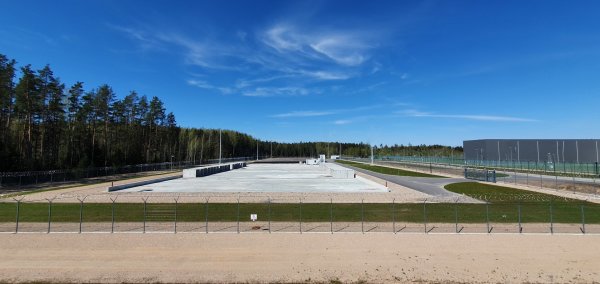Very low-level radioactive waste landfill facility was completed
2021

From 7th to 11th of May, the acts of completion of the construction of very low-level radioactive waste landfill facility (project B19) and the protective enclosure of the facility were signed. The acts were signed by the members of the construction completion commission.
The signing of the acts means that the first phase of the project has been completed, with the construction of the landfill facility and the infrastructure ready for the final disposal of very low level short-lived radioactive waste. It is planned to obtain a VATESI permit for the first campaign of radioactive waste transportation to the repository in the near future.
“Successful implementation of the B19 project is a consistent continuation of the INPP decommissioning and radioactive waste management process. The importance of this project is undoubted because we are responsible for future generations and we must ensure that radioactive waste is managed and stored in accordance with the newest and highest requirements for nuclear and radiation safety,” said Audrius Kamienas, Director General of INPP.
It is planned to place 60,000 m3 of radioactive waste in the landfill facility. A total of 15 loading campaigns are planned. At the end of each campaign, an embankment-shaped structure will be formed from layers of soil and waterproofing materials with a total thickness of 1.5-2 m, which will protect the environment from the harmful effects of radioactive waste. The operation of the landfill facility will last for 30 years.
Currently, the already generated waste is temporarily stored in the buffer storage and INPP power units.
This method of waste management is sustainable and does not shift the burden to future generations. Active institutional supervision of the landfill facility after its closure will continue for 30 years and passive supervision of is planned for another 70 years. At the end of this period, the landfill site will be available for unrestricted use.
The landfill facility is located next to other newly installed INPP complexes for radioactive waste management, which are necessary for the implementation of INPP decommissioning.
This type of landfill facility is already operating at the Oskarshamn, Forsmark and Ringhals nuclear power plants (Sweden). It was the conceptual model of the Swedish Landfill that was adapted to meet the needs of INPP. Landfill facilities for the final disposal of very low level short-lived radioactive waste with a similar purpose, but with certain differences in design, are installed and operated in many European countries (France, Spain, the UK, etc.).
Project B19-2 is funded by the European Union’s Ignalina Programme

